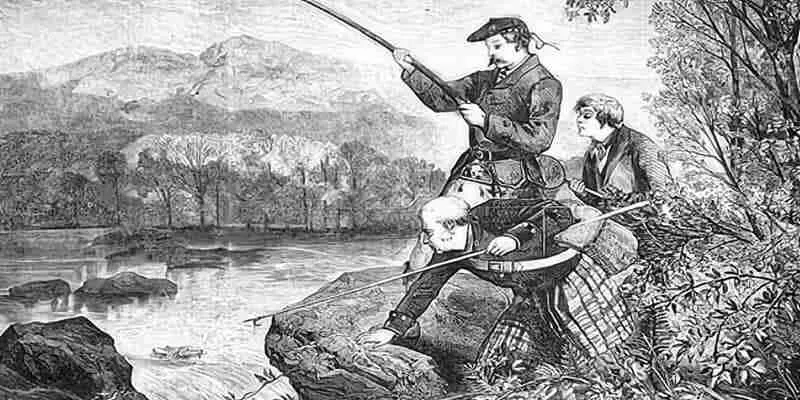
So, what is a ghillie in Scotland? A client recently asked me this question, sparking an opportunity for me to learn about this old occupation.
You may have heard of John Brown, famously known as Queen Victoria’s trusted companion. In fact, Brown started as a ghillie for her husband, Prince Albert, in the early 1850s, tasked with helping the royal family on their estate at Balmoral in the Scottish Highlands.
What is a Ghillie?
The word “ghillie” comes from the Gaelic term “gille”, meaning “servant” or “lad”.
Traditionally, a ghillie was far more than just a servant; he was a highly respected expert on the land, wildlife, and rivers. This made him indispensable when Highland sporting estates gained popularity with British aristocrats and royals during the 19th century. The ghillie was often in close contact with his laird, providing advice and companionship while ensuring a successful outdoor experience.
The role of a ghillie in Scotland was associated with hunting, deer stalking, and especially fishing. This article, part of my series on old occupations, focuses on the fishing ghillie and his role on Scottish rivers.
The Fishing Ghillie
On the river, the ghillie is lord of his domain. As Douglas Sutherland noted in The Salmon Book (1982), The river is his kingdom, and the fishing hut his castle. They often worked directly with their employer and their guests to get the best experience in fishing.
A fishing ghillie’s responsibilities went far beyond the technical aspects of fishing. Here are some key aspects of their role:
- Guiding Fishermen: Ghillies knew the best pools, times of day, and techniques for successful salmon fishing. They often accompanied guests to ensure they had a successful day.
- Managing the Riverbank: They maintained areas along riverbanks, clearing debris and obstacles to improve river flow and provide better conditions for fish movement.
- Handling Equipment: Skilled in all things fishing, ghillies assisted with setting up rods, tying flies, and teaching casting techniques. They advised on the right tackle, line, and lures to ensure success.
- Netting and Boat Handling: For larger rivers, ghillies managed boats for netting, ferrying the guests across pools, and guiding them to areas known for high fish density.
- Protecting Rivers and Wildlife: Gregor Mackenzie, in Memoirs of a Ghillie (1978), described the constant battle against poaching on Scottish rivers. Poaching not only threatened the river’s ecosystem but also jeopardized the delicate balance of fish stocks that were meticulously managed.
In addition to these duties, the ghillie’s role was as much about the experience and relationship as it was about securing the catch. The bond between ghillie and laird or employer was based on trust, knowledge, and respect.
Trusted Advisor to the Laird
Ghillies were respected by their lairds not only for their technical expertise but also for their invaluable advice. As William Scrope noted in Days and Nights of Salmon Fishing on the Tweed (1843), “apart from the advice which most ghillies will readily offer, it is frequently their skill with the gaff or net which decides the outcome of a hard-fought contest.” Their knowledge could make or break the success of a day’s sport.
Beyond their practical skills, ghillies often carried themselves with quiet authority. Many developed a stern demeanour, “a stern expression of disapproval more appropriate to a church elder,” as Scrope observed, adding to their image of discipline and integrity.
In addition, confidence was the ghillie’s greatest weapon. Having a ghillie by your side provided that confidence. Scrope’s words resonated with the importance of a good ghillie: “To have a good ghillie in attendance is perhaps the greatest confidence building of all … most ghillies spend a lifetime on the river, and most likely also their fathers before them.”
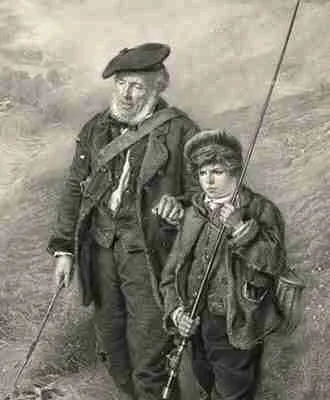
By now, you should have a clearer understanding of what a ghillie is in Scotland. These individuals were, and remain, more than just guides – they are the experts of the Scottish rivers.
Today …
ghillies are still essential figures on Scottish rivers. However, their profession has evolved with modern conservation practices and angling regulations. Their connection to Scotland’s landscapes and centuries-old knowledge of fish behaviour preserves Scotland’s proud salmon-fishing heritage. They are members of the Scottish Gamekeepers Association who represent their profession.
In answering the question, “What is a ghillie in Scotland?” we find a profession rooted in tradition, respected by the employers they serve, and beloved by those fortunate enough to fish alongside them.
Thank you for joining me on an another historical journey into an old Scottish occupation.
Please remember to leave a comment below and if you want me to write about your ancestral occupation, then please let me know.
Good luck with your family history research.
Until my next post, haste ye back.
Enjoyed this post?
Keep up-to-date with my latest posts and tips below:
We hate SPAM & promise to keep your details safe.
You may also like...
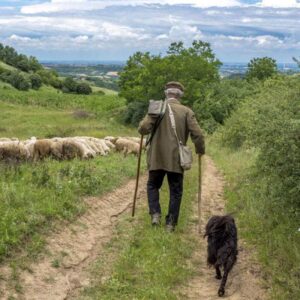
Is your surname Shepherd?
The surname Shepherd is one of the oldest occupational names found in Scotland. As the name suggests, it comes from looking after sheep.
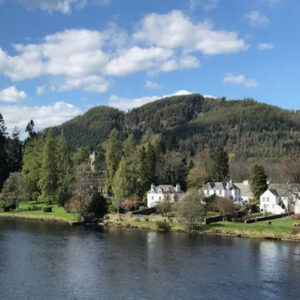
My Ancestor was from Dunkeld Town
Dunkeld town, known as the Gateway to the Highlands, is located on the banks of the River Tay beside Thomas Telford’s bridge.
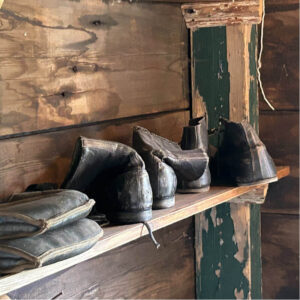
What is a Cordwainer?
A cordwainer is an old term for shoemaker. In Scotland, known as cordiners, they appear in many historical records and trade directories.

Hi Sarah, I found your article on “What is a Ghillie in Scotland?” very interesting indeed, I had no idea or even heard of a Ghillie, until I shared an old tintype photo of one of my ancestors, I thought that maybe it was Scottish military but someone mentioned the word Ghillie and now I have found your brilliant website. As a follower and avid amature into my own family tree, I think I’ll be using your website as a go to research point from now on.
I was going to attach the photo but it wouldn’t let me, I’d certainly like to share it with you, if you’d like.
Thank you kindly,
Graham Smith
Hello Graham
I would love to see the photo — you can email it to sarah@unlockyourpast.co.uk.
I see that you have subscribed to my monthly newsletter. Please do let me know if there are any occupations or Scottish surnames you would like me to write about in a future issue.
Sarah
Sorry Sarah I have only just seen your reply, I will send a copy of the photo now.
Graham